Jordanów. 2022-10-18
Jordanów railway station.
Geographic coordinates: 49.638N 19.833E.
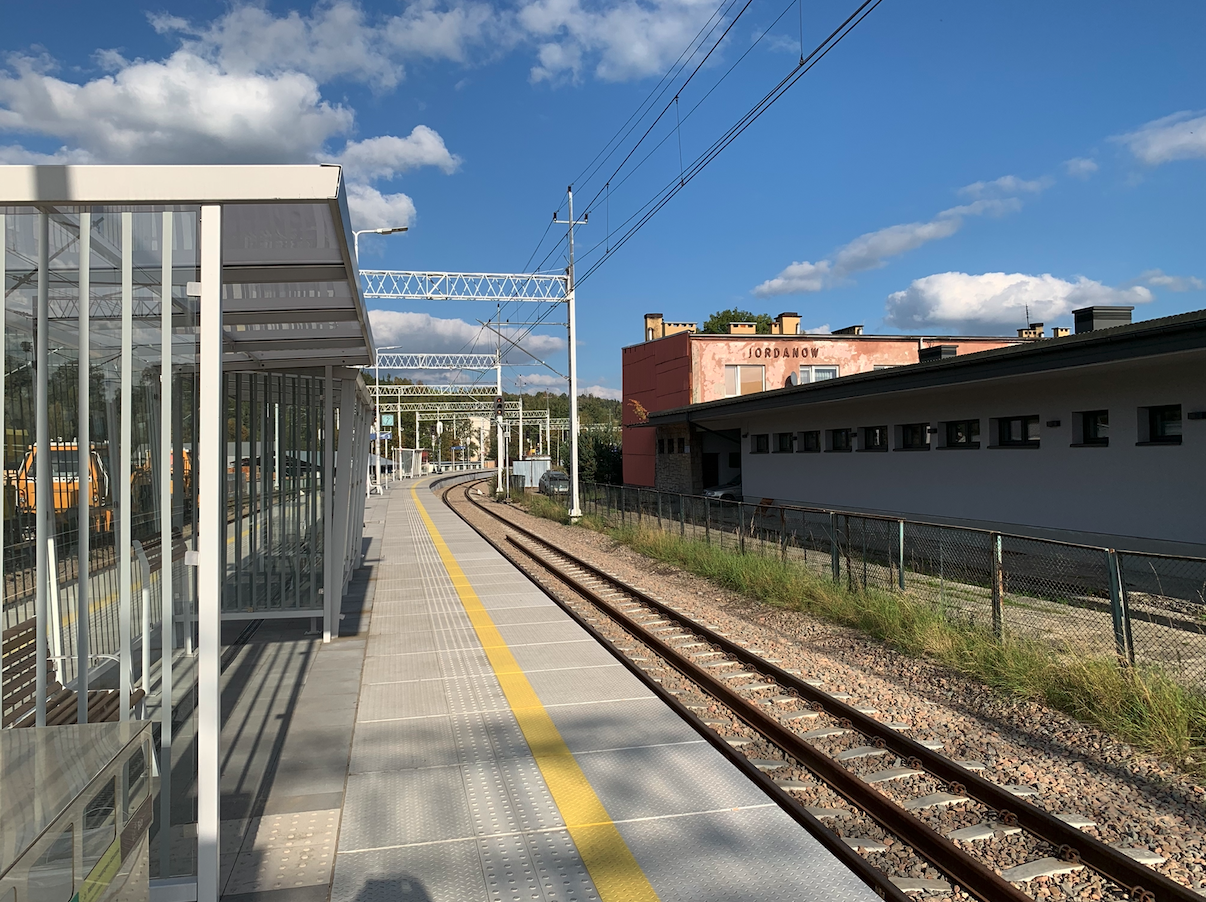
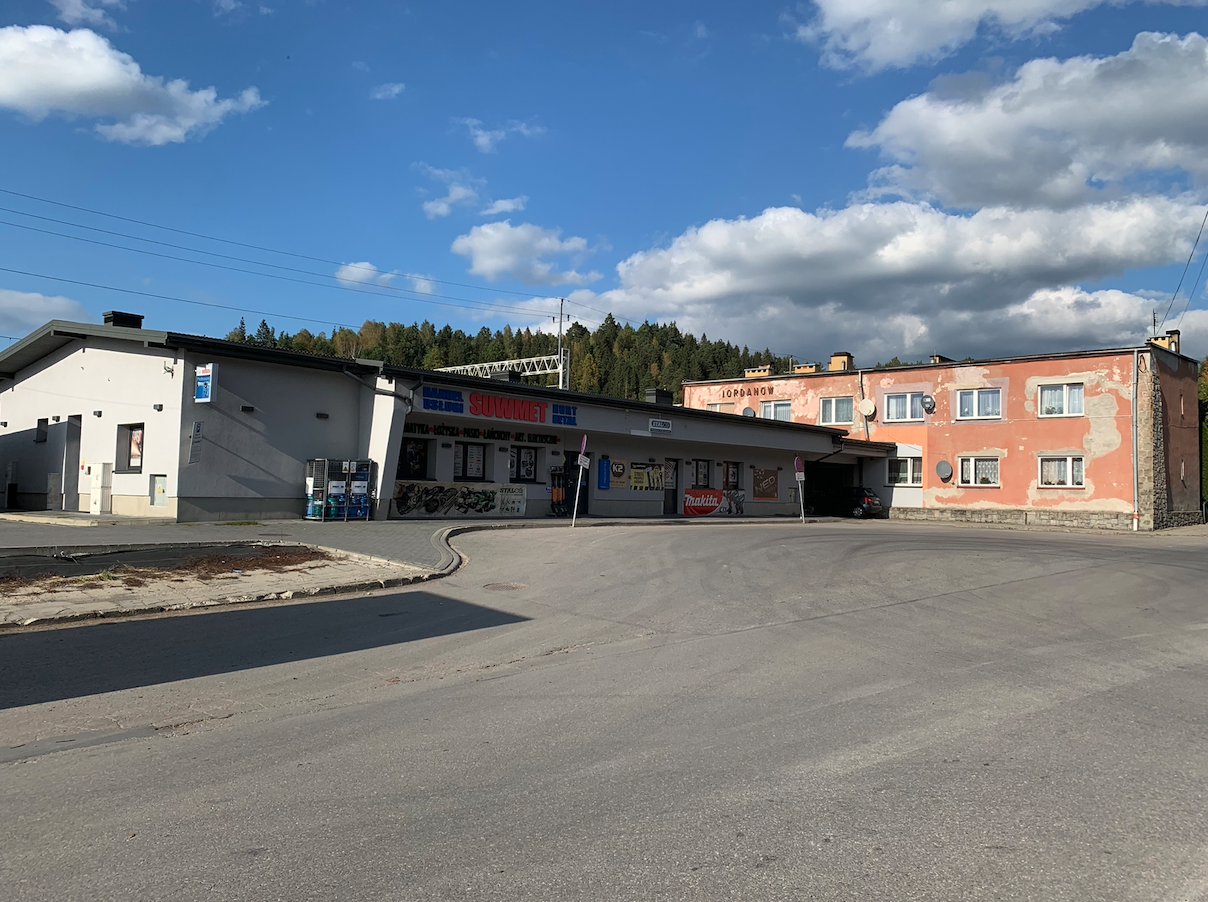
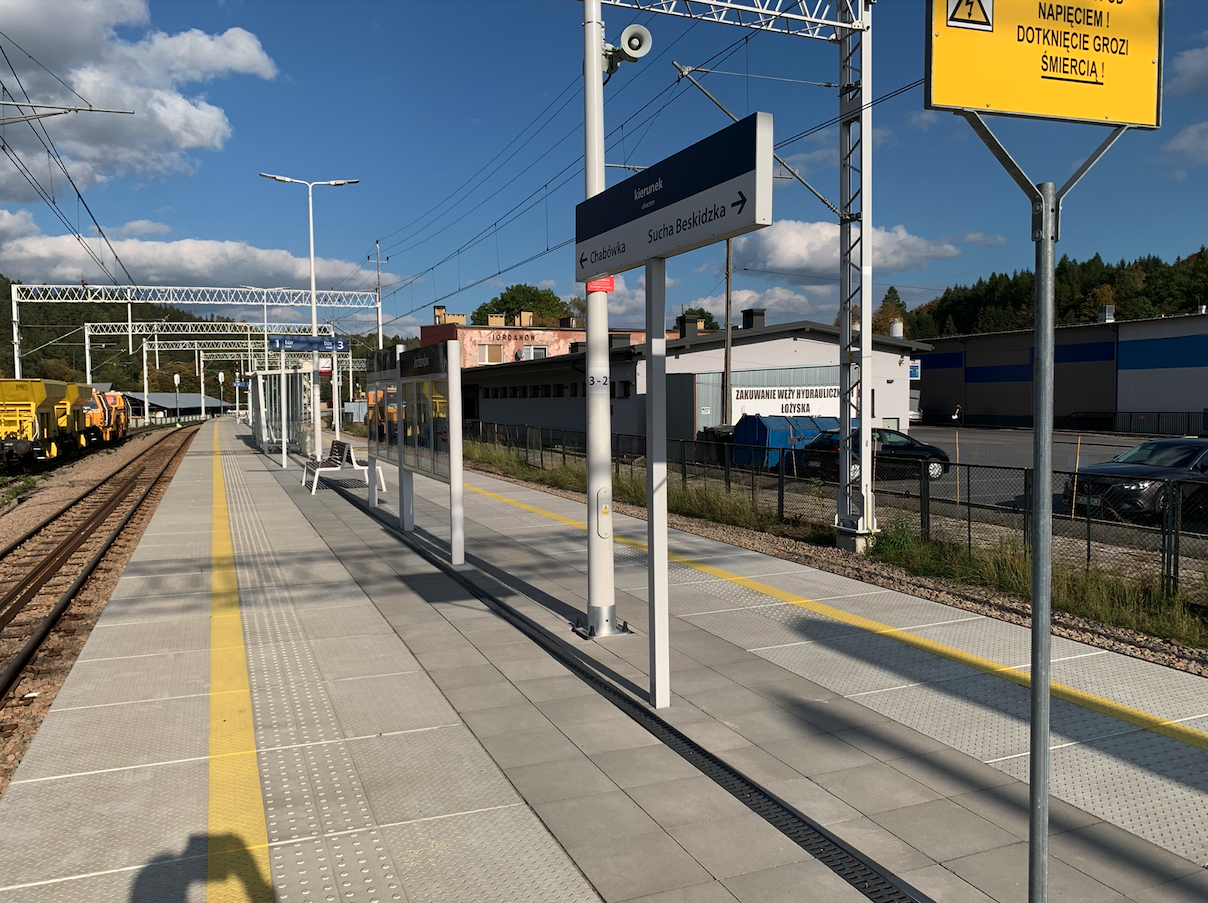
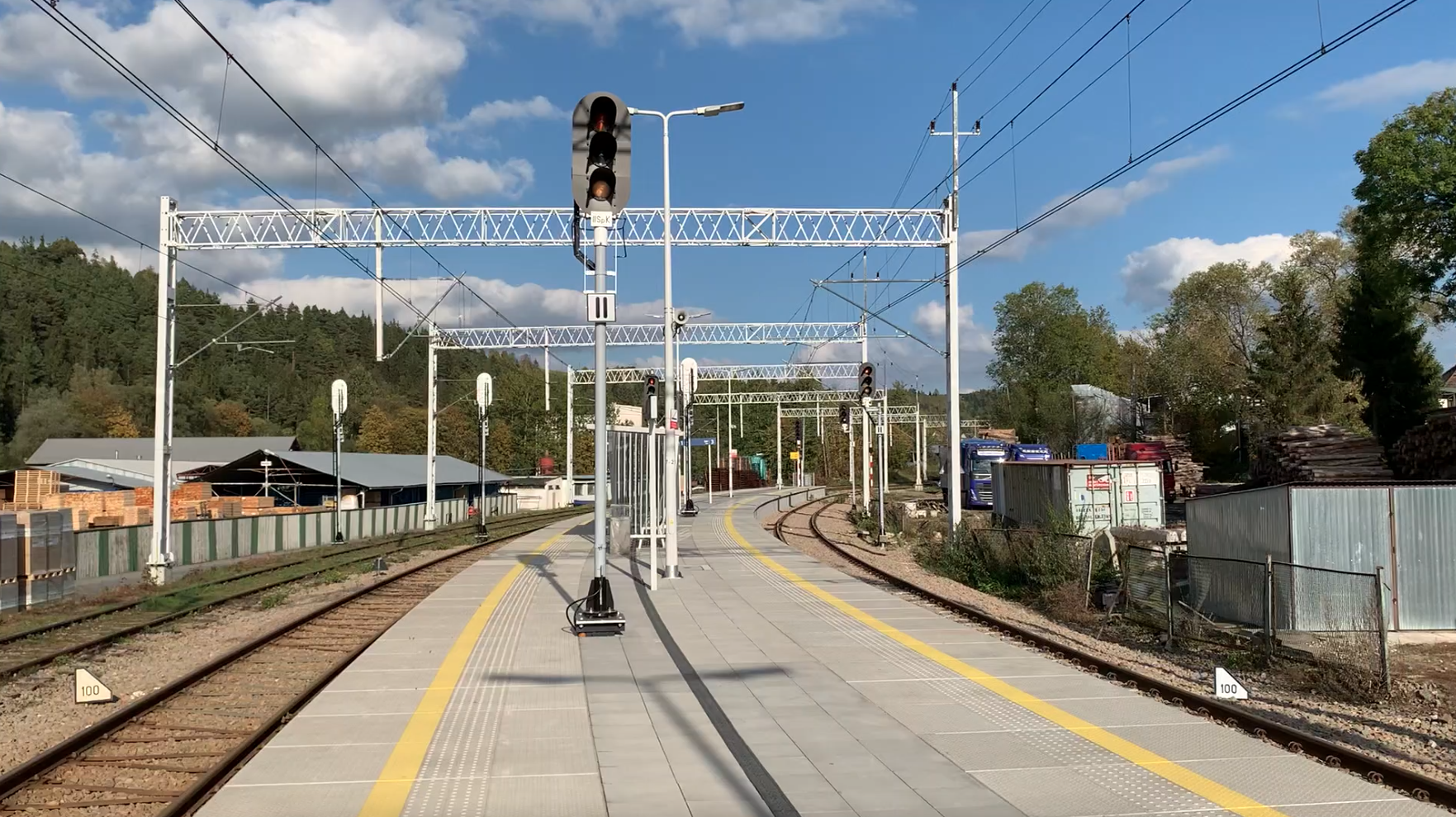

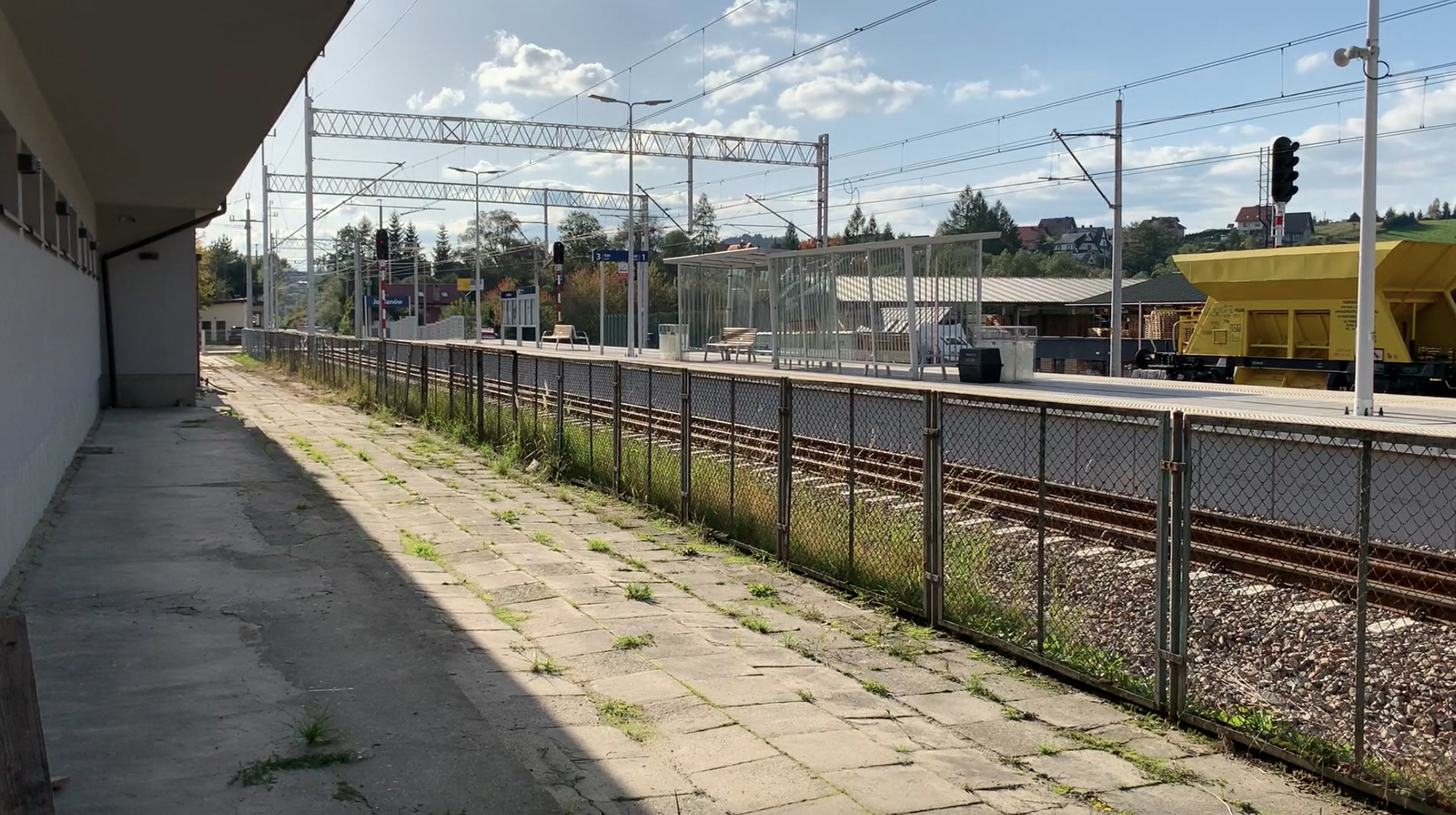
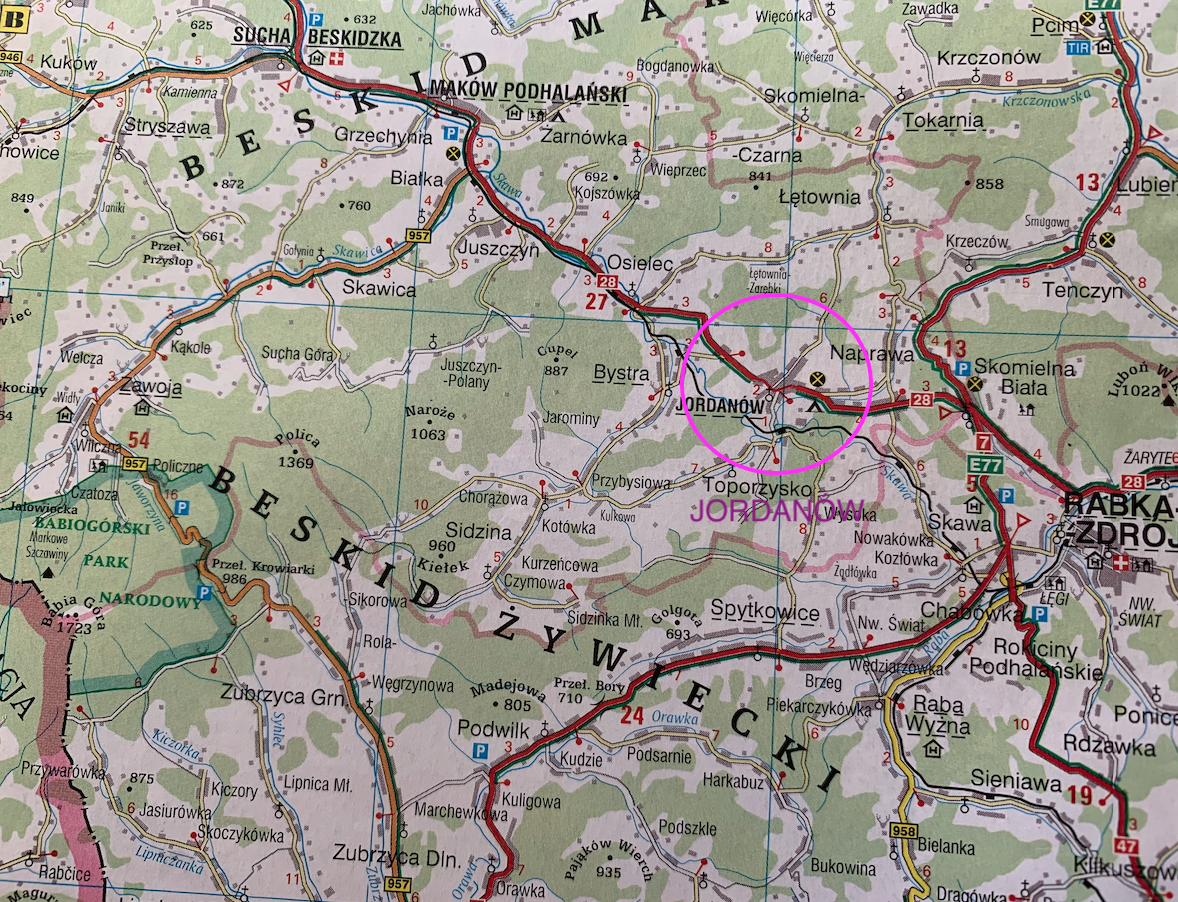
The city of Jordanów.
The city of Jordanów was founded in 1564, obtaining city rights on November 7, 1564. Jordanów is a town in the Lesser Poland Voivodeship, in the Suski poviat, the seat of the Jordanów rural commune. Jordanów is situated between the Beskid Makowski and the Beskid Żywiecki, in the Rabczyńska Basin, on the Skawa River. The city has an area of 21.03 km2 and has 5,366 inhabitants (2019). The name of the city comes from the name of the founder, Wawrzyniec Spytek Jordan. The National Road No. 28 Zator - Medyka runs through Jordanów. The remaining roads are local highways.
Air Transport.
The airports closest to Jordan are in Bielsko Biała (Aleksandrowice) (82 km) and Nowy Targ (31 km). The nearest port is Kraków Balice (71 km away).
PKP Jordanów.
The railway station in Sucha Beskidzka was located south of the city center, 2 km southwards. The station is located in the Skawa river valley, because a railway line runs along this river.
The railway station in Sucha Beskidzka was launched on December 16, 1884 as part of the Transversal Railway, when the southern part of Poland was under the Austro-Hungarian Empire.
In the 90s of the 19th century, shaped semaphores were installed on the trail. The Jordanów station was a station that mainly served nearby sawmills. The station also acted as a passing loop on a single-track route. A water tower and a coal billet were built at the station. The water tower was two-story. The bottom was made of brick, and the top with the water reservoir was covered with wood. There were two water cranes. The station building was similar to the railway station at the Kraków Swoszowice station, i.e. standard for the Transversal Railway. The building was a two-story building with a usable attic. In addition to the station, there were additional railway service buildings and apartments for railway families. From the historical buildings, only the toilet building has survived.
As a result of the Second World War, the station building was badly damaged and was pulled down. Around 1960, a new station building consisting of two simple structures was built. There is a two-story building to the east and a one-story pavilion to the west. The building exists until now (2022) but it has different functions. The building is separated from the tracks by a fence. There are apartments on the first floor in a two-story building.
The traffic lights were installed around 1970, when the trail was electrified. On December 13, 1975, the first electric train from Kraków to Zakopane entered the railway station in Jordanów.
There is one two-edge platform at the Jordanów station. Platform 1 was built in the 1950s. The platform was of a low type, about 0.30 m high above the rail head. The platform was partially lined with paving slabs at the edges. The rest was ground, overgrown with grass. There are two bus shelters with benches and litter bins on the platform. There were 10 street lamps on the platform. There were also flower beds.
On the northern side of the Jordanów station, there was a siding to Krakowskie Zakłady Armatury, the Jordan branch branch, running towards the east, for a distance of several hundred meters. The factory was launched in 1970. Currently, the siding does not exist and the name of the plant is VALVEX.
Railway line No. 98.
The railway line No. 98 Sucha (Sucha Beskidzka) - Chabówka is a single-track, electrified line, 35.817 km long. In the Network Timetable of Trains, the line is called No. 135. The line was opened for use on December 16, 1884. Electrification took place on September 12, 1975. The first major overhaul of the line took place in the 1950s, after the destruction by the Germans during the Second World War. In May 2018, the renovation of the 31 km railway line began. The renovation included the complete replacement of the track, subgrade, electric traction, and the traffic control system. As part of the renovation, 90 culverts, 23 bridges, 3 viaducts, 46 rail-road crossings were made, of which 26 crossings received automatic crossing signaling. The SHP system was installed. As part of the renovation, 7 stations and railway stops were rebuilt: Sucha Beskidzka, Osielec, Bystra Podhalańska, Jordanów, Skawa, Skawa Środkowa, and Chabówka. The renovation was carried out in stages, so that during the holiday season, trains could reach Zakopane. During the closure of the track, there was a substitute transport by PKP buses. The renovation was part of the project "Works on the lines to Zakopane No. 97, 98, 99. The cost of the works was estimated at PLN 980 million.
Written by Karol Placha Hetman
